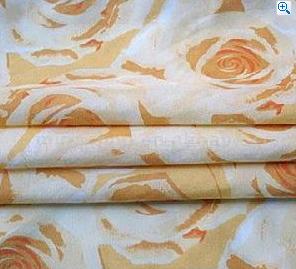 A few days ago, the EU announced that it would completely ban the import of textile products containing environmental hormones. China's textile and garment export enterprises will encounter a "threshold". In fact, information from the China Textile Federation indicated that the recall cases of China's textile and apparel export products were frequent in the first three quarters of this year. From January to September, the European Non-Food Rapid Alert System (PAPEX) issued 236 notifications to China's textile and apparel products. This is an increase of 81.54% over the same period last year.
A few days ago, the EU announced that it would completely ban the import of textile products containing environmental hormones. China's textile and garment export enterprises will encounter a "threshold". In fact, information from the China Textile Federation indicated that the recall cases of China's textile and apparel export products were frequent in the first three quarters of this year. From January to September, the European Non-Food Rapid Alert System (PAPEX) issued 236 notifications to China's textile and apparel products. This is an increase of 81.54% over the same period last year. The number of textile recalls soared
The China Securities Journal reporter consulted the China Trade Relief Information Network and learned that on November 30, 2012, the European Union's Non-Food Rapid Alert System (RAPEX) issued a consumer warning to Chinese-made “Lusa Kids†children's T-shirts. The notification country of this case was Slovakia, and it was reported that since the small part of the T-shirt was easily detached from the subject, there was a danger of suffocation once the child swallowed it; at present, the importer/vendor has voluntarily stopped selling the product. Measures.
For example, the recall of the above products is too numerous to mention. According to the latest data from the China Textile Industry Federation, in the first three quarters of this year, the EU RAPEX system issued 236 notifications on China's textile and apparel products, which is an increase of 81.54% over the same period of last year, showing significant growth. A significant portion of these notified products were withdrawn from the market, either actively or passively, and recalled products were sold. Products that have not yet entered the EU market are directly rejected by the customs.
China's textile and apparel products have been repeatedly notified of the recall reason, authoritative sources have summed it up into four aspects: Some export garments do have quality and safety issues; product quality is acceptable, but the inspection data of testing organizations in importing countries are inaccurate; China's exports Product implementation standards are not in line with international standards; export companies have asymmetric information.
Prof. Guo Yan from Beijing Institute of Clothing pointed out: “This requires domestic companies to keep abreast of the relevant trends of the exporting countries, and at the same time further improve the quality and safety level of exporting textile and apparel products.â€
Exports increase "threshold"
The EU will completely ban the import of textile products containing environmental hormones. This policy has caused the EU's textile and apparel products to encounter a new "hurdle."
The issue of environmental hormones in textiles and garments has always been a concern in countries around the world. According to the latest information released by the China Textile Industry Federation, the EU explicitly prohibits the use of nonylphenol polyoxyethylene ether (NPE) and nonylphenol (NP) in the textile production industry. The Swedish Chemicals Agency submitted a document to the European Chemicals Agency that banned the import of NPE-containing textiles into the EU before August this year, which ultimately led to the European Union’s complete ban on the sale of textiles containing NPE in the market.
Analysts suggested that in the current weak international market, textile and garment companies should not easily give up the EU market due to this “hurdle†and they must find ways to actively respond. Enterprises should not only pay great attention to the changes and implementation time of new EU requirements, make preparations in advance, strengthen the control of the source of raw materials, adopt cleaner production technologies, but also gradually substitute environmentally friendly surfactants for NPE, and waste water to wash textiles. The way.
Coincidentally, Mexico, Russia and other countries are also implementing the policy of clothing export in our country. Recently, Mexico filed a consultation request under the WTO dispute settlement mechanism on China's textile and apparel subsidy policy. In many areas including clothing and textiles, Mexico is a competitor of China, and Mexico’s move aims to suppress the competitiveness of Chinese products. In addition, the "Rules for the Safety of Product Safety for Juveniles and Children" entered into force in Russia, requiring Russian-made children's products to pass Russia's mandatory certification and to be affixed with a circulation mark.
Jacqurd curtain fabrics, with different weights and reasonable prices, we are here waiting for you to come, welcome anytime.
Jacquard curtain fabrics are woven by Italian jacquard looms, such kind of fabrics are with higher quality compared with the other, and jacquard designs can be changed and revised easily according to customers' demands and ideas. The designs of this kind are very beautiful,stereoscopic, and obervious to see and even touch. There are many choices for the designs, such as geometric designs, leaves, big flowers,and so on. Our products are exported to USA, Canada, Europe, and South America, Australia, and many South-east Asian countries.
Jacquard Curtain Fabric,Jacquard Mesh Living Room,Decorative curtain fabric new,Rectangular Jacquard Curtain
Shaoxing Angcan Import & Export Co., Ltd. , https://www.all-can.com.cn